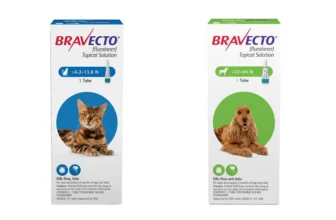As pet owners, we want our feline companions to be healthy and happy. However, many of us may not realize the importance of regular parasite prevention for California Spangled cats. These beautiful and intelligent cats are susceptible to various parasites, including fleas, ticks, ear mites, and intestinal worms. In this article, we will highlight the types of parasites that can affect California Spangled cats, the risks of parasite infestation, prevention options, and how often to administer treatments. We’ll also discuss the importance of consulting with your vet for parasite prevention advice, so that you can take the necessary steps to keep your furry friend healthy and parasite-free.
Types of Parasites That Can Affect California Spangled Cats

As a California Spangled cat owner, it’s important to be aware of the many parasites that can affect your feline friend. These parasites come in a variety of forms, from fleas and ticks to ear mites and intestinal worms. Knowing how to identify and prevent these parasites is crucial for the health and wellbeing of your beloved pet. In the following sections, we’ll discuss the types of parasites that your California Spangled cat may encounter and the risks associated with infestations. We’ll also outline the various prevention options available, including topical treatments, oral medications, collars, and natural remedies. So, let’s dive in to learn more about how you can keep your California Spangled cat safe and free from harm!
Fleas
Fleas are one of the most common parasites that can infest California Spangled cats. These tiny, wingless insects feed on the blood of animals and can cause great discomfort for cats. They can jump long distances and infest not only the cat, but also the cat’s environment, including bedding, carpets, and furniture.
Symptoms of flea infestation:
| Common Symptoms of Flea Infestation in Cats |
|---|
| Scratching, licking, or biting at skin excessively |
| Red, irritated skin |
| Development of scabs and hot spots |
| Small, black flecks (flea feces) on the skin and fur |
| Visible fleas on the cat’s skin and fur |
Fleas can also transmit tapeworms to cats, which require prompt treatment. If left untreated, a severe flea infestation can cause anemia, particularly in kittens and young cats.
How to prevent flea infestation in California Spangled cats:
There are several options for flea prevention, including topical treatments, oral medications, collars, and natural remedies. Some flea prevention treatments can also protect against other parasites, such as ticks and heartworms.
Using effective flea control products and keeping a clean environment are the best ways to prevent flea infestations. Regularly bathing and grooming your cat can also help to prevent infestations and identify them early on.
It’s important to note that flea and tick prevention should be a year-round effort, and not just during the warmer months. Fleas can thrive in warm indoor environments, so it’s important to maintain prevention efforts even during colder months.
If you suspect a flea infestation on your California Spangled cat, be sure to consult your veterinarian for proper treatment options. They can also provide guidance on the best flea and tick prevention products for your cat’s specific needs.
Flea prevention is an essential part of overall parasite prevention for California Spangled cats. By identifying the symptoms of flea infestations, preventing infestations through regular treatment and grooming, and consulting with a veterinarian for guidance, owners can ensure their cats remain healthy and happy.
Ticks
Ticks are another type of parasite that commonly affects California Spangled cats. These pesky parasites are often found in grassy or wooded areas and can easily attach themselves to your cat as they venture outdoors. Ticks are particularly concerning, as they can spread a variety of dangerous diseases to both your cat and yourself.
Some of the most common tick-borne diseases in cats include:
- Cytauxzoonosis- a severe and often fatal disease that affects a cat’s red blood cells and can cause fever, weakness, and jaundice.
- Babesiosis- a disease that affects the red blood cells, causing symptoms such as fever, anemia, and lethargy.
- Haemobartonellosis- a disease that can cause anemia in cats and may lead to complications such as immune-mediated hemolytic anemia.
These conditions can be difficult and expensive to treat, making prevention all the more important.
To keep your California Spangled cat safe from ticks, it’s essential to conduct regular checks for any ticks that may have latched onto their fur. Look for any areas on your cat’s body where ticks may have attached themselves, such as around the ears, mouth, and under the arms. If you find a tick, it’s important to remove it as soon as possible to reduce the risk of disease transmission.
Here are some tips for removing ticks from your cat:
- Use fine-tipped tweezers to grasp the tick as close to your cat’s skin as possible.
- Slowly pull the tick straight out, making sure to remove the entire tick, including the head.
- Disinfect the area with rubbing alcohol or soap and water.
Preventing ticks from attaching to your cat in the first place is even better than removing them. There are many preventative measures available, including topical treatments, oral medications, and tick collars. Natural remedies, such as essential oils and diatomaceous earth, may also be effective in repelling ticks.
Make sure to consult with your vet to determine the best tick prevention option for your California Spangled cat. Regularly checking for ticks and administering preventative measures can go a long way in keeping your cat healthy and safe.
Ear Mites
Ear mites are tiny parasites that live in the ear canal of cats, including California Spangled ones. These mites feed on the wax and oils in the ear canal and can cause extreme itching, inflammation and infection. They can also lead to a ruptured eardrum or other serious complications if left untreated.
Signs of Ear Mite Infestation
It is important for California Spangled cat owners to keep an eye out for signs of ear mite infestation. Some of the most common symptoms include:
– Frequent scratching of the ears and head
– Dark and waxy discharge from the ear
– Strong odor coming from the ear
– Shaking of the head or tilting it to one side
– Irritation or inflammation of the ear
– Loss of balance or coordination
If any of these symptoms are present, it is important to take action quickly to prevent further complications.
Prevention and Treatment of Ear Mites
Prevention is the best defense against ear mites in California Spangled cats. Keeping the cat’s ears clean and dry is key to preventing an infestation. Regularly cleaning the ears with a gentle cleanser can help remove excess wax and debris from the ear canal, making it less hospitable to mites.
If an infestation does occur, there are several treatment options available. These include topical medications, oral medications and natural remedies. Topical medications, such as Revolution, Advantage Multi, Frontline Plus and others, are applied directly to the cat’s skin and are effective in killing ear mites.
Oral medications may also be prescribed by a veterinarian for more severe cases of ear mites. Additionally, some California Spangled cat owners opt for natural remedies for ear mite treatment. These can include adding a few drops of mineral oil or olive oil to the ears, or using a mixture of diluted apple cider vinegar and water.
In order to ensure that ear mites do not return, it is important to treat any other pets in the household, as well as thoroughly clean and disinfect the cat’s bedding and living areas.
Conclusion
Ear mites can be a frustrating and painful problem for California Spangled cat owners. However, with regular preventative measures and swift treatment at the first sign of an infestation, the condition can be easily managed. Don’t forget to consult with your veterinarian for guidance on the best prevention option for your specific cat.
Intestinal Worms
Intestinal worms are a common issue for cats, including the California Spangled breed. These worms can be contracted from various sources such as hunting, eating contaminated food or water, or coming into contact with infected feces. The most common types of intestinal worms that affect cats are roundworms, hookworms, and tapeworms.
Roundworms are long, thin worms that resemble spaghetti and can grow up to several inches long. They live in the small intestine and can cause weight loss, poor coat condition, vomiting, and diarrhea. Roundworm infestations can even cause a life-threatening blockage in the intestine.
Hookworms are small, thin worms that attach themselves to the intestinal wall and feed on the cat’s blood. They can cause anemia, weight loss, diarrhea, and in severe cases, death. Hookworms can also be contracted by humans through contact with infected feces.
Tapeworms are flat, segmented worms that can grow up to several feet in length. They live in the small intestine and can cause itching around the anus, vomiting, and weight loss. These worms are often contracted from eating fleas, which can carry the tapeworm eggs.
Fortunately, there are several preventative measures that can be taken to control and prevent the incidence of intestinal worms in California Spangled cats. These include administering regular deworming medications, providing a clean and hygienic litter box, and regular cleaning of the cat’s living environment.
It is important to note that intestinal worms can pose a threat not only to the cat’s health but to human health as well. Children, pregnant women, and people with compromised immune systems are particularly at risk. It is imperative to regularly monitor and control parasites in the living environment.
Regular visits to the vet are essential for monitoring the cat’s overall health and administering deworming medications, as well as for getting advice on further preventative measures. By taking a proactive approach to parasite prevention and control, California Spangled cat parents can help ensure the health and well-being of their beloved pets, as well as their families. For more information on parasite prevention for California Spangled cats, check out this comprehensive guide to parasite control for California Spangled cats.
The Risks of Parasite Infestation for California Spangled Cats

As much as we adore our feline friends, they are just as susceptible to parasitic infestations as any other animal. Parasitic infections can cause a wide range of issues ranging from mild skin irritations to severe health complications. Apart from being a discomfort for your California Spangled, parasites can also significantly impact their behavioral patterns and daily living. Understanding the risks that parasites pose will help you take the necessary measures to protect your furry friend’s entire wellbeing. So, let’s dive into some of the dangers that California Spangled cats are at risk of, due to parasitic infestations. For more tips on how to protect your California Spangled against parasitic infections, consider reading our Cali Spangled flea and tick control guide.
Health Risks
When it comes to parasite infestations, California Spangled cats are vulnerable to a variety of health risks. These risks include:
- Anemia: Parasites such as fleas and ticks rely on the blood of their host to survive, and repeated bites can lead to anemia in your cat.
- Skin Infections: Flea infestations can cause severe itching, leading to skin irritations and infections.
- Stomach Issues: Intestinal worms can cause vomiting, diarrhea, and weight loss.
- Organ Damage: Certain parasites can lead to organ damage if left untreated. For example, heartworms can grow up to a foot long and cause blockages in the heart and lungs[1].
Not only do these health risks pose a danger to your California Spangled cat, but they can also result in expensive veterinary bills. In some cases, untreated parasite infestations can even be fatal[2].
It’s important to note that some of these health risks can occur even if your California Spangled cat stays indoors. Parasites such as fleas and ticks can be brought into the home on other pets or even on your clothing. Thus, parasite prevention should not be overlooked, even if your cat is an indoor pet.
There are steps you can take to prevent parasite infestations, including the use of topical treatments, oral medications, collars, and natural remedies[3]. By taking preventative measures, you can protect your California Spangled cat from potential health risks and help them live a long, healthy life.
Behavioral Risks
Parasite infestation not only poses health risks to California Spangled cats but can also lead to behavioral issues. Fleas and ticks are particularly notorious for causing discomfort to cats and making them scratch persistently. This can lead to hair loss, skin irritation and secondary infections. Constant scratching and discomfort can also make them agitated and anxious.
Stress and anxiety: Parasite infestations can cause stress and anxiety in California Spangled cats. The constant itching and biting can create a stressful environment for the cat. This can lead to behavioral changes such as restlessness, hiding, and aggression. An anxious cat may even start to avoid interactions with humans and other pets in the household.
Lethargy: Cats that are infested with parasites may become lethargic and lose their enthusiasm for playtime. Parasitic infestations can make a cat feel unwell, which can lead to them being less energetic.
Loss of appetite: When a California Spangled cat is infested with parasites, it can lead to a loss of appetite which can result in weight loss and dehydration.
Socialization issues: Parasites like fleas and ticks can lead to personality changes in California Spangled cats. A once friendly and interactive cat can become moody, irritable and unsociable.
Indoor parasites: Indoor cats are not exempt from parasite infestations. Even if a cat never leaves the house, there are still parasites that can hitch a ride indoors on human clothing. That’s why it’s important to treat all pets living in the home with a monthly preventative medication to protect them from parasites that can be present indoors.
To keep California Spangled cats healthy and happy, it is essential to prevent and treat parasite infestations. By providing regular parasite prevention to your cat, you can decrease the risk of health problems and behavioral issues. For more information on how to prevent parasites in your home, read our article on /parasites-at-home-california-spangled/.
Parasite Prevention Options for California Spangled Cats

When it comes to protecting your beloved California Spangled cat from parasites, there are several options available. From topical treatments to natural remedies, choosing the right prevention method can be overwhelming. It’s important to consider the effectiveness, convenience, and potential side effects of each option. In this section, we’ll explore some of the most common parasite prevention options for California Spangled cats and weigh the pros and cons of each. Let’s dive in!
Topical Treatments
Topical treatments are a popular choice for preventing parasites in California Spangled cats. These treatments are usually applied to the skin between the shoulder blades or at the base of the neck, where the cat cannot lick the medication. Some popular topical treatments include:
- Frontline Plus: This is a popular topical treatment that kills fleas, ticks, and lice. It also prevents flea eggs from hatching, which helps break the flea life cycle.
- Advantage Multi: This treatment not only kills fleas and ticks, but also prevents heartworms and treats intestinal parasites like hookworms and roundworms.
- Revolution: This is another all-in-one treatment that kills fleas, ticks, and heartworms, as well as ear mites and some intestinal parasites. It is also water-resistant, making it a good option for cats that like to swim.
When applying topical treatments, it’s important to follow the instructions carefully. The medication should be applied directly to the skin, not just to the fur. The cat should also be kept dry for at least 24 hours after application to give the medication time to absorb.
Topical treatments can be a good option for cats that are difficult to give oral medications to or that have a history of adverse reactions to oral medications. However, it’s important to note that some cats may still have reactions to topical treatments, such as skin irritation or hair loss. If you notice any unusual symptoms after applying a topical treatment, contact your veterinarian.
Oral Medications
One effective option for preventing parasites in California Spangled cats is using oral medications. These medications come in the form of chewable tablets or flavored liquids that can be added to your cat’s food. Oral medications are easy to administer and can protect against a broad range of parasites, including fleas, ticks, heartworm, and intestinal worms.
Advantages of Oral Medications
Oral medications offer several advantages over other parasite prevention options. They are easy to administer, and there is no need to worry about the medication wearing off from bathing or grooming. The medications can also provide protection for longer periods, with some options lasting up to 12 weeks. Additionally, oral medications are effective at preventing infections caused by internal parasites, such as roundworms and hookworms.
Types of Oral Medications
There are several types of oral medications available for preventing parasites in California Spangled cats. Some popular options include:
| Oral Medication Type | Description | Duration of Protection |
|---|---|---|
| Flea prevention tablets | Kills fleas and prevents re-infestation | 1 month |
| Tick and flea prevention tablets | Kills and repels ticks and fleas | 3 months |
| Heartworm prevention | Prevents heartworm disease | 1 month |
| Broad-spectrum dewormer | Treats and prevents intestinal worms | 2-12 months |
Administering Oral Medications
Administering oral medications to your California Spangled cat is straightforward. Simply follow the dosage instructions provided by your veterinarian. Some medications may need to be given with food, while others can be given on an empty stomach. Always ensure that your cat is eating and drinking regularly and keep an eye out for any adverse reactions to the medication, such as vomiting or diarrhea.
Conclusion
Oral medications are an effective and convenient option for preventing parasites in your California Spangled cat. By choosing the right medication and following the dosage instructions, you can help keep your feline friend healthy and parasite-free. Consult with your veterinarian to determine the best oral medication for your cat’s needs.
Collars
Collars are another option for preventing parasites in California Spangled cats. These collars contain pesticides that can kill fleas and ticks on contact. They also work to repel pests and prevent reinfection.
When choosing a collar for your cat, look for one that is waterproof and long-lasting. Some collars only last a few weeks and may need to be replaced frequently. It’s important to read the label and follow the manufacturer’s instructions for proper use and placement.
Collars may not be the best option for cats who are sensitive to pesticides, as the chemicals can be absorbed through the skin and into the bloodstream. Additionally, collars may not be effective in preventing other types of parasites like ear mites or intestinal worms.
If you choose to use a collar for parasite prevention, it’s important to monitor your cat for any adverse reactions. Symptoms of pesticide poisoning include vomiting, diarrhea, and lethargy. If your cat experiences any of these symptoms, remove the collar immediately and contact your veterinarian.
While collars can be an effective tool for preventing parasites in your California Spangled cat, they should be used in combination with other prevention methods like topical treatments or oral medications.
Natural Remedies
There are several natural remedies that can help prevent parasite infestations in California Spangled cats. These remedies are often preferred by pet owners who want to avoid chemicals and medications that could potentially harm their cats. Below are some natural remedies to consider:
- Diatomaceous earth: Diatomaceous earth is a natural powder made from the fossilized remains of tiny aquatic organisms called diatoms. When sprinkled around the environment, it can dehydrate and kill fleas and ticks. However, it’s important to only use food-grade diatomaceous earth that is safe for pets to ingest.
- Essential oils: Certain essential oils have natural insecticidal properties that can help repel parasites. Some of the best essential oils for cats include lavender, lemon, peppermint, and cedarwood. Be sure to dilute the oils before applying them to your cat and avoid using them too frequently as they can be toxic in high doses.
- Vinegar: A solution of equal parts water and vinegar can be used as a natural flea repellent. Apply the solution to your cat’s fur and let it dry. Repeat the process once a day until the fleas are gone.
- Nutritional supplements: Supplements like brewer’s yeast and garlic can help make your cat’s blood less appealing to parasites. However, it’s important to consult with your veterinarian before giving your cat any nutritional supplements as they can interact with other medications and health conditions.
It’s important to note that natural remedies may not be as effective as traditional parasite prevention options and should not be relied on solely to prevent infestations. They can be used in conjunction with other prevention methods and should always be used under the guidance of a veterinarian.
How Often Should You Administer Parasite Prevention?

When it comes to administering parasite prevention for your California Spangled cat, the frequency at which it should be done can vary depending on the type of prevention method you choose.
For topical treatments, such as flea and tick prevention drops, these should typically be applied once every month. This ensures that your cat is protected from these pesky critters and prevents re-infestation.
Oral medications, such as dewormers, typically only need to be given once every few months, depending on the specific medication and the type of worm it targets. However, it’s important to follow the instructions on the medication bottle or provided by your veterinarian to ensure the safety and effectiveness of the treatment.
Collars may provide longer lasting protection, with some lasting up to eight months. However, it’s important to note that not all collars are created equal and may only provide protection against certain types of parasites.
For natural remedies, such as essential oils, it’s important to do further research and consult with your veterinarian to determine the frequency at which they should be administered.
It’s important to be consistent with administering parasite prevention and to regularly check your cat for any signs of infestation. Consult with your veterinarian to determine the appropriate frequency for the specific type of prevention method you choose. And remember, prevention is always easier and less expensive than treatment, so stay proactive in protecting your California Spangled cat from parasites.
Consult Your Vet for Parasite Prevention Advice
Ensuring the regular health and wellbeing of your dear California Spangled cat by preventing parasite infestations is crucial. One of the best ways to make sure you are effectively preventing parasites is by consulting your vet for parasite prevention advice.
Veterinarians are specialized in animal care and they can provide you with the best available options for preventing parasites that are specific to your California Spangled cat’s unique needs and lifestyle. They can help you choose the most suitable product, dosages and frequency of administration.
It is essential to consult with your vet before administering any preventative measures as over-the-counter remedies may not be the safest or most effective for your California Spangled cat. Some over-the-counter products can cause allergic reactions and even lead to severe health risks. It is important to be cognizant of any pre-existing medical conditions that your feline has and to ask your vet about the best preventative measures to take.
Your vet will be able to prescribe either a topical or oral medication or recommend a particular collar based on your cat’s needs and the likelihood that they may come into contact with parasites.
While it is always necessary to monitor your cat’s behaviour and for any symptoms that might signal that they have become infected with parasites, it is critical that you regularly consult with your vet to ensure that their preventative measures are adequate
Consulting with your vet is essential when it comes to determining a parasite prevention program for your California Spangled cat. As they require specific care and attention, talking to a veterinary professional is vital to keep them healthy and thriving. So, make sure to book an appointment with your vet to keep your cat healthy and happy.
Conclusion
In conclusion, keeping your California Spangled cat free from parasites is crucial to their overall health and well-being. As pet parents, we must do everything we can to prevent these pesky little critters from taking hold and causing harm to our furry friends.
Through regular parasite prevention measures, such as topical treatments, oral medications, collars, and natural remedies, we can greatly reduce the risk of infestation. It’s important to consult with your vet to determine the best course of action for your cat and to ensure that the products you use are safe and effective.
Remember, different parasites require different prevention methods, so a one-size-fits-all approach won’t work. By staying vigilant and administering prevention measures on a regular basis, we can help protect our California Spangled cats from the harmful effects of fleas, ticks, ear mites, and intestinal worms.
In the end, the health and happiness of our furry family members are worth the effort and investment it takes to prevent parasite infestations. So, let’s do our part and give our cats the protection they deserve.
Frequently Asked Questions
1. Can cats get parasites from other animals?
Yes, it is possible for cats to contract parasites from other animals through direct contact, such as through flea or tick infestations.
2. How do I know if my California Spangled cat has parasites?
Common signs of parasitic infestations in cats include excessive scratching or grooming, lethargy, vomiting, diarrhea, and weight loss. It is important to regularly schedule check-ups with a veterinarian to detect and treat any potential parasitic issues early on.
3. Can parasites in cats be harmful to humans?
Yes, some parasites, such as roundworms, can be transmitted from cats to humans and cause health problems. It is important to practice good hygiene and sanitation measures, such as washing hands after handling cats and regularly cleaning litter boxes.
4. Are natural remedies effective in preventing parasites in cats?
Natural remedies, such as essential oils or garlic, may have some insect-repellent properties, but they are not clinically proven to be effective in preventing parasitic infestations. It is recommended to use veterinarian-recommended prevention methods.
5. Can I give my California Spangled cat more than one parasite prevention treatment at once?
It is not recommended to administer multiple parasite prevention treatments at once without consulting with a veterinarian, as this can increase the risk of adverse reactions.
6. Can I prevent parasites in my California Spangled cat by keeping them indoors?
While keeping cats indoors may decrease their risk of parasitic infestations, they can still contract parasites through contact with other animals or contaminated surfaces. Regular prevention measures are still recommended.
7. Can spaying or neutering my California Spangled cat help prevent parasitic infestations?
Spaying or neutering a cat does not directly prevent parasitic infestations, but it can help reduce their risk of wandering and coming into contact with parasites.
8. Can I purchase parasite prevention treatments without a veterinarian’s prescription?
Some parasite prevention treatments, particularly over-the-counter options, may be available without a veterinarian’s prescription. However, it is recommended to consult with a veterinarian to determine the safest and most effective prevention options for your California Spangled cat.
9. Are there any side effects to parasite prevention treatments for cats?
While uncommon, some cats may experience side effects, such as vomiting or diarrhea, after receiving parasite prevention treatments. It is important to monitor your cat for any adverse reactions and contact a veterinarian if necessary.
10. Can I stop administering parasite prevention treatments if my California Spangled cat shows no signs of infestation?
It is not recommended to stop administering parasite prevention treatments without consulting with a veterinarian, as the risk of infestation remains even if there are no visible signs. It is better to continue prevention measures to ensure the health and well-being of your cat.







